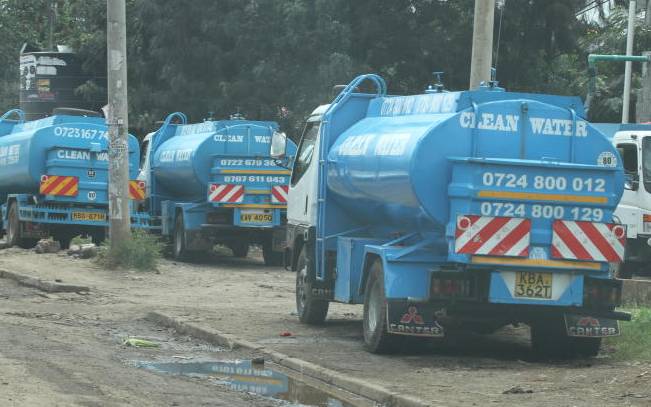×
The Standard e-Paper
Truth Without Fear

Water selling trucks parked in Makadara estate, Nairobi. There is a huge water shortage across Nairobi County,on May 16, 2020. [Elvis Ogina, Standard]
Water bowsers in Nairobi will have to undergo inspection before commencing operation.